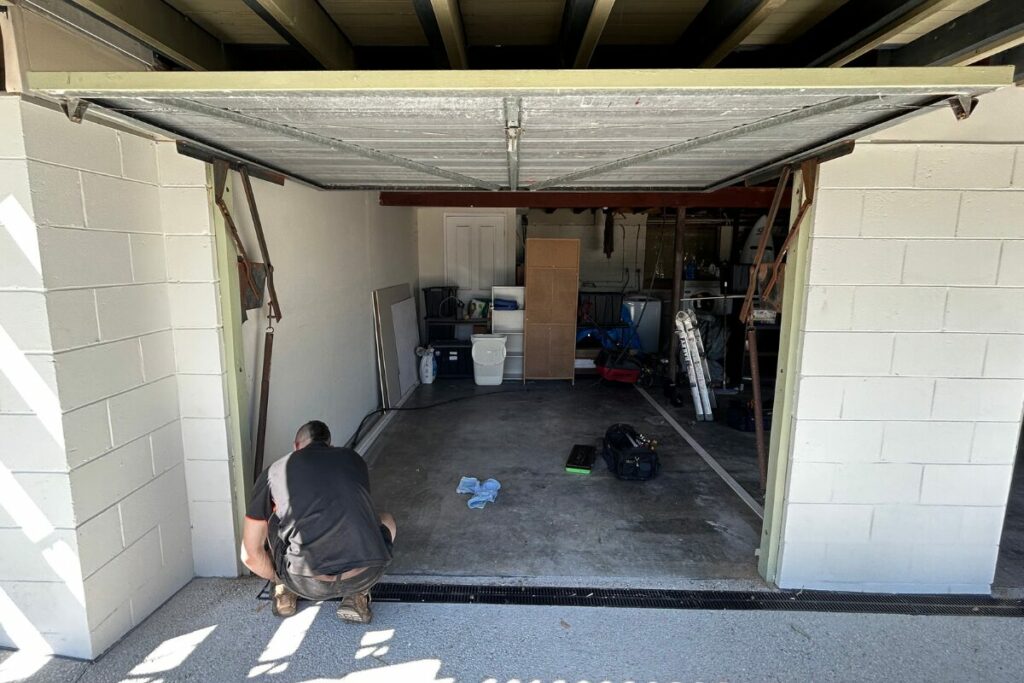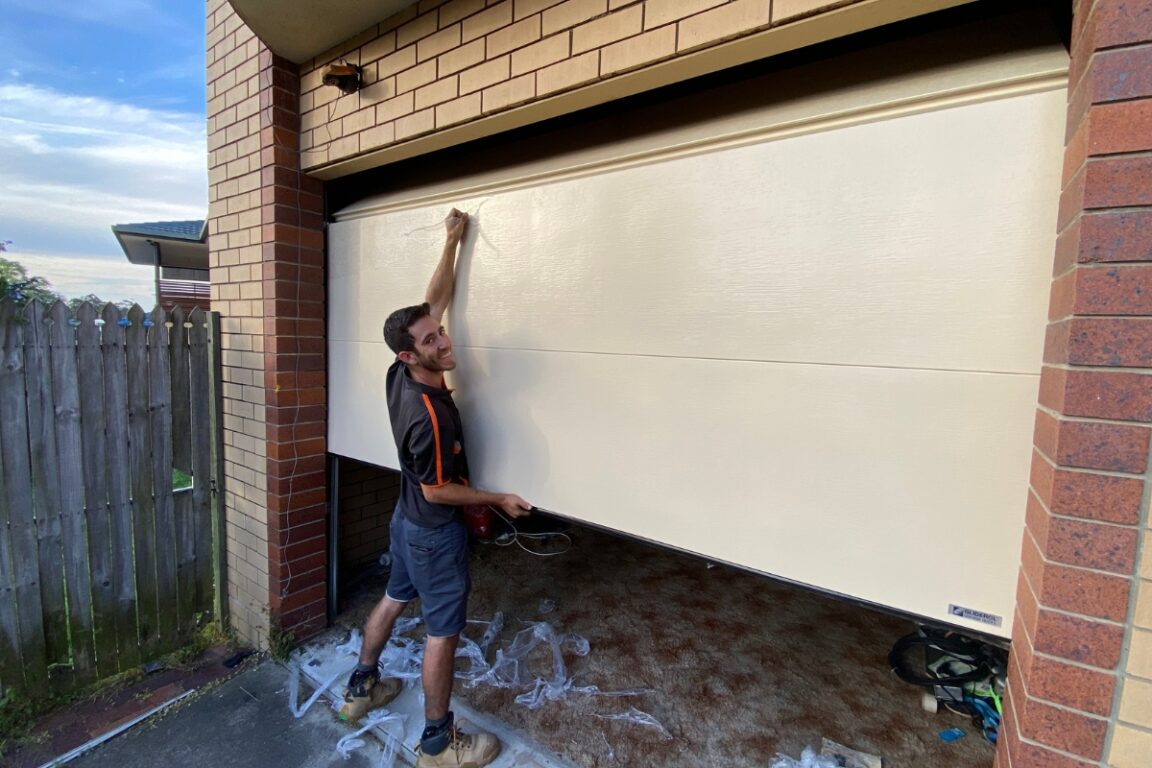Welcome to our comprehensive guide on balance testing your garage door. Ensuring that your garage door is properly balanced is crucial for its safety and smooth operation. An imbalanced garage door can pose a risk to your vehicles, property, and the overall functionality of the door itself. In this tutorial, we will provide you with a step-by-step process to test and adjust the balance of your garage door, helping you maintain its optimal performance and longevity.
Key Takeaways:
- Regularly testing and adjusting the balance of your garage door is essential for its safe operation.
- Visual inspection, lubrication, weatherstripping, and track alignment are important maintenance tasks to perform before starting the balance test.
- Torsion spring garage doors may require professional assistance for balance adjustment.
- Performing a balance test involves disconnecting the garage door from the opener and observing its movement at the halfway point.
- An unbalanced garage door can lead to heavy door operation, increased wear and tear, strained opener, and difficulty in opening and closing smoothly.
Importance of Garage Door Balance
A properly balanced garage door is essential for its safe and smooth operation. When a garage door is balanced, it opens and closes easily without any hesitation or effort. This not only ensures the safety of users but also prevents wear and tear on other garage door components.
An imbalanced garage door can put additional strain on the garage door opener, potentially causing it to fail prematurely. It can also lead to uneven movement, noisy operations, and increased vibrations, affecting the overall functionality and lifespan of the door. Lifting a heavy, unbalanced door can be a safety hazard and may cause injuries or accidents.
By maintaining proper balance, you not only ensure the safety of your family and vehicles but also prevent damage to the door itself and its surrounding structures. Additionally, a balanced garage door reduces the stress on the opener, allowing it to operate more efficiently and last longer.
Regular balance testing is vital to detect any issues and make necessary adjustments. This proactive approach helps prevent potential problems, saving time and money on costly repairs in the long run.

The Benefits of Garage Door Balance:
- Enhanced Safety: With a balanced garage door, the risk of accidents or injuries is significantly reduced.
- Smooth Operation: A balanced door opens and closes smoothly, without jerks or hesitations.
- Damage Prevention: Proper balance protects other garage door components from premature wear and tear.
- Prolonged Lifespan: By minimizing stress on the opener and other mechanisms, balanced doors last longer.
To ensure your garage door is properly balanced and to enjoy these benefits, it is recommended to perform regular balance testing and seek professional assistance if needed.
Regular maintenance and balance testing will keep your garage door operating smoothly and safely for years to come.
How to Perform a Balance Testing Your Garage Door
To ensure the safety and proper functioning of your garage door, performing a balance test is essential. By following these step-by-step instructions, you can easily assess whether your garage door is balanced or requires adjustment.
- Close the garage door completely.
- Disconnect the garage door from the opener by unplugging it or turning off the circuit breaker.
- Mark or visually note the halfway point of the garage door.
- Use the emergency release cord to move the door to the marked halfway point. Let go of the cord and observe the door for any movement.
- Wait for a minute to see if the door slowly lowers or raises on its own. If it does, it is an indication that the door is off-balance.
- Pull the emergency release cord to fully raise the garage door. The door should stay open without sliding back down. If the door slides back down, it is not balanced.
- Close the garage door completely and unplug the garage door motor or turn off the circuit breaker.
- Use a large pair of locking pliers or a C-clamp to secure the torsion tube and prevent the drum and cable from loosening. Place another clamp on one of the garage door tracks to prevent the door from accidentally opening.
- Locate the winding cone on the end of the torsion spring and insert the winding bars into the holes. Loosen the set screws on the winding cone and hold the winding bar firmly.
- Follow the correct winding process, tightening or loosening the torsion spring in quarter-turns until the door is properly balanced.
- Use an indelible marker to mark the torsion tube for future reference.
- Expand the torsion spring slightly and tighten the screws on the winding cone.
- Remove the winding bars, unclamp the clamps, and manually open and close the garage door to ensure it is balanced.
- If the balance test is successful and there are no obstructions or sticking issues, reattach the garage door opener.
Performing a balance test on your garage door is a simple yet crucial maintenance task that ensures its optimal performance and safety. By following these steps, you can identify and rectify any imbalance, preventing potential accidents and reducing wear and tear on the garage door components.
| Steps | Description |
|---|---|
| 1 | Close the garage door completely |
| 2 | Disconnect the garage door from the opener |
| 3 | Mark the halfway point of the garage door |
| 4 | Move the door to the marked halfway point and observe for any movement |
| 5 | Wait for a minute to check if the door lowers or raises on its own |
| 6 | Pull the release cord to fully raise the garage door |
| 7 | Secure the torsion tube and prevent the drum and cable from loosening |
| 8 | Locate the winding cone and insert the winding bars |
| 9 | Tighten or loosen the torsion spring until the door is balanced |
| 10 | Mark the torsion tube for future reference |
| 11 | Expand the torsion spring and tighten the screws |
| 12 | Remove the winding bars, unclamp the clamps, and test the door |
| 13 | Reattach the garage door opener if the balance test is successful |
Signs of an Unbalanced Garage Door
An unbalanced garage door can exhibit certain signs that indicate the need for balance testing and adjustment. Some of these signs include:
- The door feels unusually heavy when opening and closing manually.
- Excessive wear and tear on garage door components, such as springs, cables, rollers, and hinges.
- Strain on the garage door opener, causing it to work harder than necessary.
- Increased noise and vibration during operation.
- Difficulty in smoothly opening or closing the garage door.
If you notice any of these signs, it is important to perform a balance test and make the necessary adjustments to ensure the door is properly balanced.
An unbalanced garage door not only poses a safety risk but also leads to unnecessary wear and tear on various components. The door may feel heavier than usual, requiring more effort to manually open and close. This increased weight can strain the garage door opener, leading to potential malfunctions or premature failure. Additionally, an unbalanced door may produce excessive noise and vibration during operation. It may also struggle to smoothly open or close, getting stuck or experiencing jerky movements. To prevent further damage and ensure optimal garage door performance, it’s crucial to address these signs of imbalance promptly through balance testing and adjustment. Properly balancing the garage door helps distribute the weight evenly, reducing strain on the opener and promoting smooth, safe operation.

Adjusting an Extension Spring Door
Adjusting an extension spring door is a relatively simple process that homeowners can do themselves. Follow these steps to adjust the tension of your extension spring door:
Step 1: Release the Tension
Start by taking all the tension off the door. Open the door completely and support it securely using a ladder.
Step 2: Prevent Movement
To prevent the door from moving during the adjustment process, place brackets on both sides of the tracks.
Step 3: Remove Safety Cables
If your extension spring door has safety cables, remove them before adjusting the tension of the springs.
Step 4: Adjust the Tension
Roll out the springs off the door brackets and move them to the next hole to increase or decrease the tension. This will depend on whether you want to tighten or loosen the springs.
Step 5: Test the Door
After adjusting the tension, test the balance of the door by manually moving it up and down. The door should move smoothly and stay in place when opened partially.
Step 6: Fine-Tune with S-Hooks
If further adjustments are necessary, use S-hooks on the pulley cables to fine-tune the tension of the springs.
Step 7: Tighten the Cables
If more tension is needed, tighten the cables by adjusting their length.
Please note that when working with extension springs, it is crucial to exercise caution and follow appropriate safety measures. Always wear protective gear and ensure proper support for the door during the adjustment process.
Conclusion
Ensuring the balance of your garage door is essential for its safe and efficient operation. By performing regular balance testing and adjustment, you can prevent accidents, prolong the lifespan of your door and its components, and maintain smooth functionality. While some homeowners may be able to successfully conduct balance testing and adjustment on their own, it is highly recommended to seek professional assistance, particularly when dealing with torsion spring garage doors. Garage door technicians have the necessary expertise and specialized tools to handle the adjustment process safely and ensure optimal balance.
By prioritizing the balance of your garage door and conducting regular maintenance, you can enjoy a reliable and long-lasting garage door system. Remember to schedule regular inspections and lubrication to keep your door in top condition. Don’t ignore any signs of an unbalanced door, such as increased noise, difficulty in operation, or excessive wear and tear. Addressing these issues promptly will help maintain the safety and functionality of your garage door.
Investing in professional assistance for garage door balance testing and adjustment not only guarantees optimal results but also provides peace of mind. Garage door technicians have the knowledge and experience to identify potential issues and recommend appropriate solutions. Their expertise ensures that your garage door is properly balanced and operates smoothly, enhancing the safety and convenience of your home. Regular maintenance and professional assistance are key to maintaining a garage door that functions flawlessly for years to come.
FAQ
Why is balancing a garage door important?
Balancing a garage door is crucial for its safety and smooth operation. An imbalanced garage door can be dangerous and cause damage to vehicles, property, and the garage door components.
How can I perform a balance test on my garage door?
To perform a balance test, close the garage door completely, disconnect it from the opener, mark the halfway point, move the door to the marked halfway point, observe for any movement, and check if the door stays open when fully raised. For detailed instructions, refer to the step-by-step tutorial.
What are the signs of an unbalanced garage door?
Some signs of an unbalanced garage door include feeling unusually heavy when opening and closing manually, excessive wear and tear on garage door components, strain on the garage door opener, increased noise and vibration during operation, and difficulty in smoothly opening or closing the door.
How do I adjust an extension spring door?
To adjust an extension spring door, take all the tension off the door, support it with a ladder, place brackets on both sides of the tracks, remove safety cables (if applicable), roll out the springs off the brackets, move them to the next hole to adjust tension, test the door for balance, and make further adjustments using S-hooks on the pulley cables. Ensure to exercise caution and follow safety measures.
Why is maintaining the balance of my garage door important?
Maintaining the balance of your garage door is crucial for its safe and efficient operation. Regular balance testing and adjustment can prevent accidents, extend the lifespan of the door and its components, and ensure smooth functionality. By prioritizing the balance of your garage door and conducting regular maintenance, you can enjoy a reliable and long-lasting garage door system.




